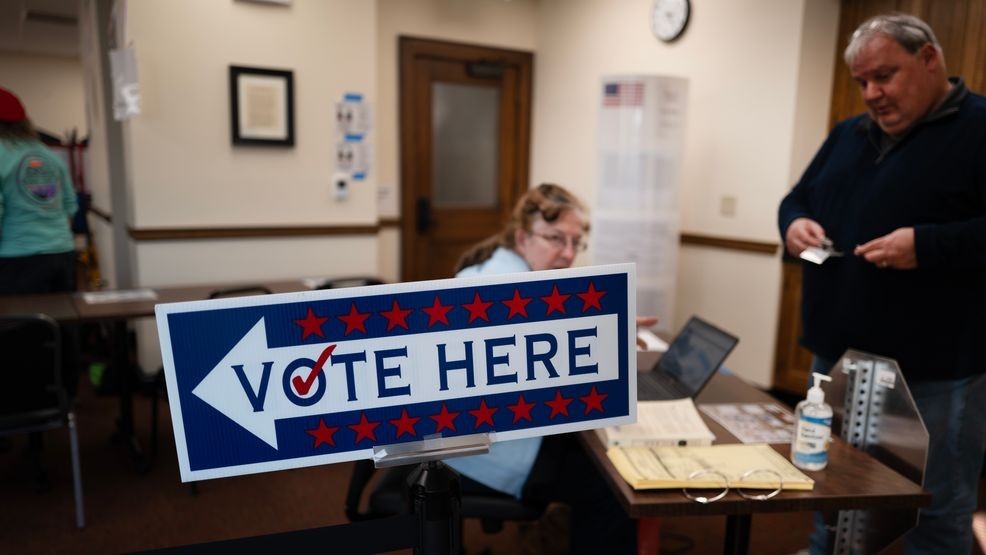Americans, including more Republicans, embracing early voting

(TNND) — Republicans are embracing early voting this election, though many of them remain skeptical of the practice.
We saw the highest voter turnout in 120 years in 2020, and about two-thirds of the roughly 155 million Americans who voted four years ago did so before Election Day.
That swamped 2016 early voting turnout, when about 47 million Americans voted early.
The pandemic in 2020 forced Americans who perhaps hadn’t tried mail-in voting before to give the method a try.
It’s too early to say if 2024 will again see over 100 million early voters.
But what is clear is that more Republicans are participating this year in the early voting process.
"We've really tried from the (Republican National Committee) and the (Donald) Trump campaign to send the message out there that we want you to vote early," RNC co-chair Lara Trump told The National News Desk last week.
The University of Florida’s Election Labs early voter tracker showed close to 46 million people had already voted as of Monday afternoon. It was about half and half in terms of voting early in person or by mail.
The UF Election Lab showed about 66 million mail ballots had been requested.
Only half of states have party registration.
In those states, 40% of early voters are registered Democrats and 36% are registered Republicans.
Four years ago, 30% of early voters were Republicans.
“That's pretty substantial,” Oklahoma State University politics professor Seth McKee said of the 6% increase so far in Republican early voting participation.
But, he said, “There's just no way to parse until after all is said and done whether we actually saw an increase in Republican early voting that overall led to an advantage for Republicans.”
We don’t know yet if this is a substitution effect where you've got more Republicans deciding to vote early, pulling away from their turnout on Nov. 5.
“So, how much is vote-mode shifting in 2024 is an open question,” he said.
We know that when you vote by mail once, you get into the habit of doing it, said Todd Belt, the Political Management program director at George Washington University.
Folks recognize the convenience, and the process becomes demystified.
Perhaps folks who voted by mail last time liked it enough to stick with it this year.
Casey Burgat, the Legislative Affairs Program Director at GW, said the Republican acceptance of early voting isn't a coincidence.
“We saw in previous campaigns the Republican leaders, particularly Donald Trump, saying don't use this. This is ripe for fraud. Republicans don't believe in this. And we saw a lot of his supporters follow that message,” Burgat said. “We haven't seen that message anymore. So, Trump has been either convinced or distracted from that message of 2020 that this is no longer a threat to us. And in fact, if we want to have a chance of winning, we have to adopt this, especially in those swing states.”
The election is expected to turn on the outcome of just seven battleground states.
An Associated Press tracker of early voting shows higher levels for Republicans so far in three of the swing states: Arizona, Nevada and North Carolina.
More Democrats have cast early votes in Pennsylvania.
There isn’t partisan tracking available for early votes in the swing states of Georgia, Michigan or Wisconsin.
“I went out to Pennsylvania, and Democrats were telling me they didn't trust their local canvassing boards or the statewide election officials, because they thought that the votes that might be easiest to disqualify were the mail-in ones. So, you might have more Democrats waiting until Election Day,” Belt said. “So, we've got a real reverse going on in terms of the approach to things. And I just don't think that we can gain any meaningful inferences at this time.”
The UF Election Lab’s tracker shows 80% of early voters are over age 40.
And McKee noted the gender gap in early voting.
Fifty-four percent so far are female.
Women tend to vote more Democratic, but what’s unknown is what that 54% means in light of the greater shares of Republican early voters so far this year.
President Joe Biden got 55% of the female vote in total in 2020, while Hillary Clinton won women by 15 points in 2016.
It is possible Republicans are casting early votes despite some apprehension about the practice.
Last week, the Pew Research Center reported that just 38% of Trump supporters are confident that mail-in ballots will be counted as voters intend. Meanwhile, 85% of Vice President Kamala Harris’ supporters expressed confidence in mail-in ballots.
Burgat said greater acceptance of mail-in voting or early voting could be good for overall voter participation.
“It just becomes what we do, and that's good for turnout rates,” he said. “That's good for participation. It removes a lot of those barriers to entry of just Election Day voting, particularly for some populations, and that's good if you care about civic participation.”
